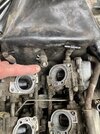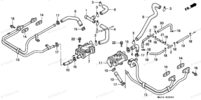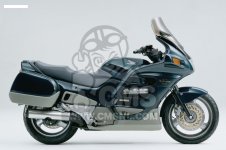Hi all,
I was working on the bike of a neighbor (Honda ST1100S) and because the bike won't start after a long period of standing idle in a shed (of garage as we call that here in The Netherlands) I was removing the carbs for inspecting and cleaning. When I removed the air chamber / duct assembly I noticed, when removing the tube attached to the air chamber, a big screw inside the tube. Now, as this tube is connecting to the engine I'm wondering why there is a big screw pushed into that tube (or hose)? Why would a manufacturer push a screw into that hose? I think it's a vacuum hose, but I'm not sure and also I'm not sure why the screw is inserted? It's very hard to get the screw out of the hose and I think it's cheaper to replace the hose. But .... I can't find the hose on any of the pictures in the manuals. As yoiu are all very knowledgeble people I'm requesting your help to identify the purpose of the screw in the hose and what if I replace the hose with no screw in it (or remove the screw)? Please check the attached picture. Thanks!
I was working on the bike of a neighbor (Honda ST1100S) and because the bike won't start after a long period of standing idle in a shed (of garage as we call that here in The Netherlands) I was removing the carbs for inspecting and cleaning. When I removed the air chamber / duct assembly I noticed, when removing the tube attached to the air chamber, a big screw inside the tube. Now, as this tube is connecting to the engine I'm wondering why there is a big screw pushed into that tube (or hose)? Why would a manufacturer push a screw into that hose? I think it's a vacuum hose, but I'm not sure and also I'm not sure why the screw is inserted? It's very hard to get the screw out of the hose and I think it's cheaper to replace the hose. But .... I can't find the hose on any of the pictures in the manuals. As yoiu are all very knowledgeble people I'm requesting your help to identify the purpose of the screw in the hose and what if I replace the hose with no screw in it (or remove the screw)? Please check the attached picture. Thanks!



